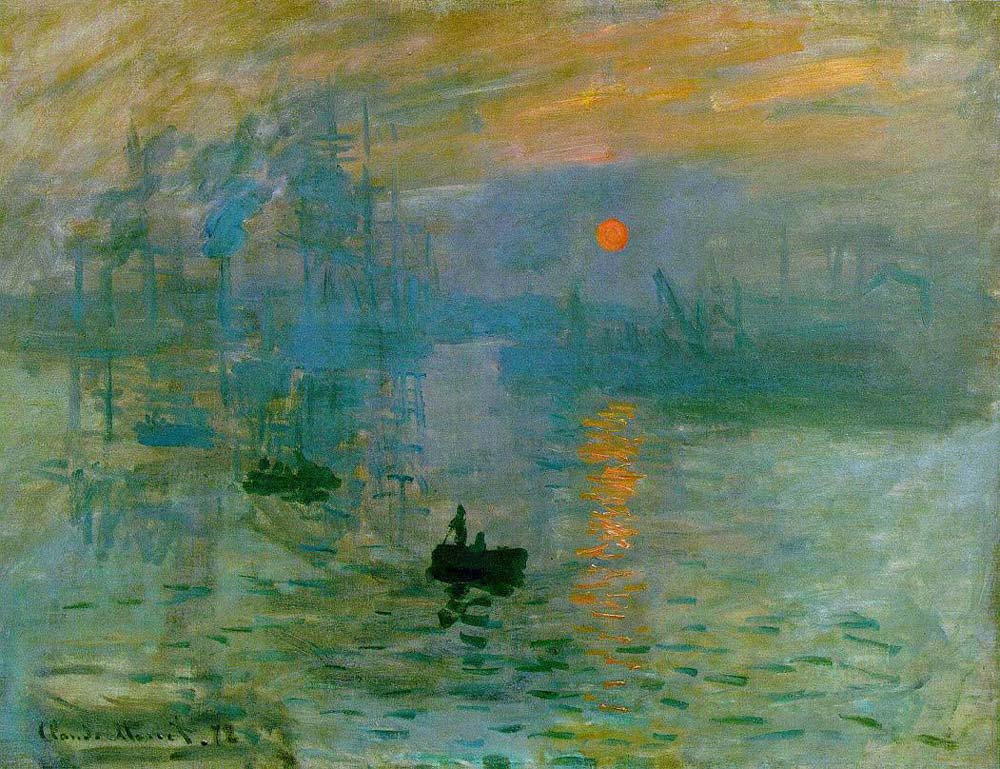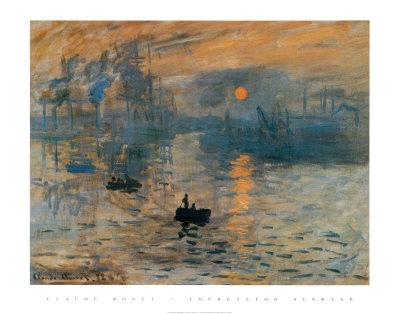
Things never really happen in a neat, packaged way. This makes a nice headline, but history, sadly for journalists, does not work like that. Margaret Livingstone, a professor of neurobiology at Harvard University, said “If you make a black and white copy of Impression: Sunrise, the Sun disappears entirely.” Īlthough it may seem that the Sun is the brightest spot on the canvas, it is in fact, when measured with a photometer, the same brightness (or luminance) as the sky. Livingstone said that this caused the painting to have a very realistic quality, as the older part of the visual cortex in the brain - shared with the majority of other mammals - registers only luminance and not colour, so that the Sun in the painting would be invisible to it, while it is just the newer part of the visual cortex - only found in humans and other primates - which perceives colour. After a year of service, Monet contracted typhoid fever and went absent without leave. His studies were interrupted when he was drafted into the First Regiment of the African Light Cavalry although his wealthy father had the opportunity to pay for Monet’s exemption from conscription, he refused to do so after Monet refused to give up painting. He took a different approach, preferring to sit at a window and paint what he saw. When travelling to Paris, Monet noticed other arts students copying pieces from the great masters. The Neoclassical movement was de rigueur, and it was highly unusual for a work to stray away from using the traditional rules of composition.
HISTORY OF MONET IMPRESSION SUNRISE 1872 SERIES
In 18, he completed a series that explored the effects of light, atmosphere, and seasonal changes on Haystacks the following few years, he applied the same treatment to a Gothic façade in his Rouen Cathedral series and, for his most ambitious project, Monet spent 30 years creating 250 large-scale paintings of Water Lilies.Īt the time, Monet’s approach to landscapes was shocking even offensive to those who would not believe he would leave artworks looking unfinished. The artist continued to capture “impressions” of his surroundings for the remainder of his life. With this in mind, it is no surprise that he would be the one to officially initiate the Impressionist Movement.įollowing this name change, the Impressionist movement saw a surge in popularity, with Monet at the forefront.

While the French painter was already an established artist by the time he completed Impression, Sunrise-and subsequently sparked a major art movement-his earlier work exhibits many of the characteristics that would later come to define Impressionism. Often referred to as the “Father of Impressionism,” Monet was one of the movement’s most prominent members.

How was claude monet impression sunrise oil 1872 offensive


 0 kommentar(er)
0 kommentar(er)
